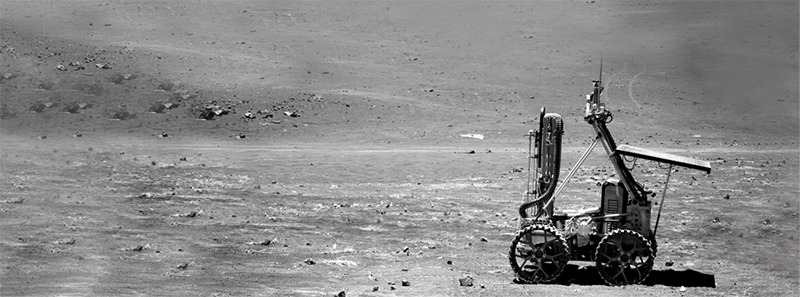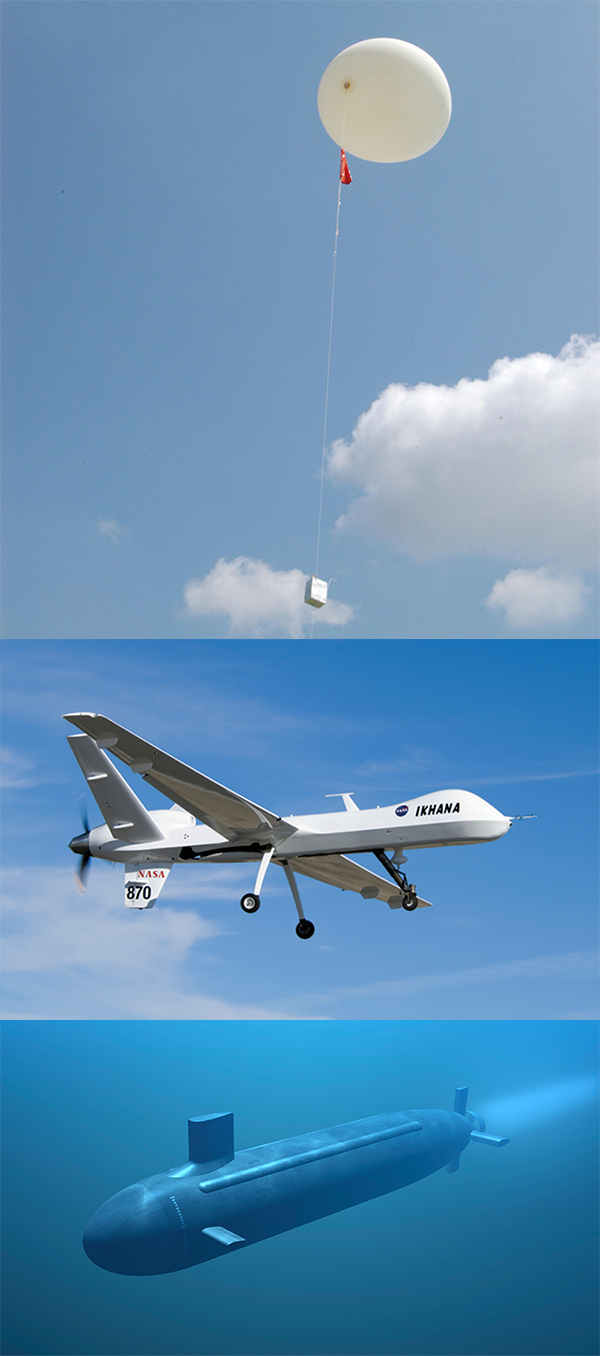
Virtual Machine Language Controls Remote Devices
NASA Technology
Virtually all of Chris Grasso’s academic and professional career has been built on NASA technology. “I’ve been working with NASA since college,” he says.
Grasso’s NASA experience started at the University of Colorado, where he served as a command controller of the first university-controlled NASA satellite, the Solar Mesosphere Explorer, launched in 1981. That experience led to work developing operations systems for other spacecraft, followed by related research for his master’s and doctorate degrees. Then, after completing a NASA fellowship, Grasso started working at Lockheed Martin on projects like Stardust, Mars Odyssey, and the Spitzer Space Telescope.
It was at Lockheed, he says, where, “I created Virtual Machine Language (VML) from scratch. It was the last sequencing language that Lockheed would ever need for the Spitzer Space Telescope.”
Up until the creation of Grasso’s VML, spacecraft controllers had to determine each and every individual command for a spacecraft like Spitzer and then radiate it from the ground—an inefficient and time-consuming process. In contrast, Grasso’s VML provided a sequencing language that could interpret, onboard the spacecraft, reusable scripts that operators on the ground had written so the spacecraft would behave the way that operators instructed. In order for VML to work, a virtual machine, or a software-simulated processor, is used onboard a spacecraft.
For Spitzer, the use of VML meant the spacecraft could independently respond to its environment and dispatch commands to its instruments at the right time, under the right conditions. “It could understand time and it would execute according to a clock tick, so we could make everything deterministic and regular as it executed,” says Grasso.
One thing led to another, and by 2005 Grasso cofounded a company with his wife to provide spacecraft software-engineering services. Called Blue Sun Enterprises, the company specializes in the development and deployment of flight and ground software components for space missions.
Technology Transfer
Thomas Moss, an engineer in the Applied Physics Branch of the Materials Science division at Kennedy Space Center, says he and his group built some operational sequencing capabilities for the Regolith and Environment Science and Oxygen and Lunar Volatiles Extraction (RESOLVE) mission, which consists of several instruments atop a rover that work together to obtain and analyze samples on the Moon. However, Moss says, “We wanted something with more advanced capabilities.”
Under the Small Business Innovation Research (SBIR) program, Kennedy started working with Grasso’s Blue Sun Enterprises, based in Boulder, Colorado, to refine and enhance VML for use with RESOLVE. After working with the company for a couple of years, in July 2012, Kennedy performed a successful demonstration of a mock-up RESOLVE using VML on Mauna Kea, a volcano, in Hawaii. The demonstration was intended to simulate a nine-day mission to the Moon, and VML was used to control the RESOLVE instruments from Kennedy, Ames Research Center, Johnson Space Center, and the Canadian Space Agency.
“It was a hard sell to some scientists initially because they want to be able to control every step of the operation of their subsystem,” says Moss, “But when it was unavailable for a short period and all the values and commands had to be set manually through the ground user interface, they realized it was tedious and wanted VML operational as soon as possible.”
Compared to previous versions, Grasso says, the VML supplied to Kennedy—VML 3.0—features extra capabilities such as state machines, which can autonomously make decisions about spacecraft operations during critical tasks. Using VML, operators are able to define state machines as well as synchronize multiple state machines.
“The VML state machines are intended to coordinate all of the RESOLVE instruments—four spectrometers, an oven, three cameras, a drill, and a chemical analyzer—to work in a way that is very dependent on one another,” says Grasso. “VML provides not only an interpretation capability for state machines but also a coordination capability that is not present in standard state machines.”
Moss says he appreciates the coordination provided with VML 3.0, as well as the capability for sequencing onboard the spacecraft. “It makes it safe and relatively easy to update the onboard VML software. If the payload was on the Moon, it would allow us to change and upload the VML sequences and logic without having to recompile and upload the entire payload software set,” he says.
Benefits
Today, Blue Sun’s NASA-derived VML 3.0 is commercially available for crewed or uncrewed spacecraft in low-Earth orbit or in deep space. According to the company, the technology provides operational cost reductions for spacecraft by carrying out autonomous actions instead of relying on instructions relayed from the ground.
By using VML, Grasso says operations technicians can now perform many of the tasks that flight software engineers typically perform because the product can interpret the scripts that operators compile. Plus, the VML sequences are easier to develop than flight software, and relatively smaller and safer. “We provide an easy-to-write language for the operators,” says Grasso.
Currently, Red Canyon Software of Denver, Colorado is using VML 3.0 in an SBIR project for spacecraft automation to perform the interpretation of the automation scripts running on state machines. VML 3.0 is also part of a recently released Phase II SBIR technology demonstration for the Reactive Rendezvous and Docking System (RRDS), overseen by the Jet Propulsion Laboratory. RRDS is a technology that will enable autonomous retrieval of an orbiting sample canister around Mars. VML 3.0 may also be used in conjunction with JPL’s AutoNav spacecraft navigation technology development for the autonomous navigation necessary to visit a comet or asteroid.
Meanwhile, back at Kennedy, Moss says VML is playing a significant role in the RESOLVE payload operations as part of the Resource Prospector mission. “We are becoming more dependent on it for our flight design. It is managing the payload software and how the payload functions. VML is key to the payload’s mission success.”
In the future, Grasso sees potential applications with various remote systems including those in the air, underwater, or on land. Specifically, these could include unmanned aerial vehicles, remote sensing devices, and autonomous vehicles like submarines, weather balloons, and telescopes. “Any application that requires remote autonomy could use VML to implement that autonomy and decision-making,” he says.
Grasso says he is extremely appreciative for his career built on NASA technology. “Working with NASA has been the driving force for our company,” he says. “It has given us an opportunity to have a substantial impact on space operations.”

Kennedy Space Center worked with Blue Sun Enterprises to refine and enhance the company’s virtual machine language (VML) to control the instruments on RESOLVE. Now the NASA-improved VML is commercially available for crewed and uncrewed spacecraft, and has potential future applications on remote systems such as weather balloons, unmanned aerial vehicles, and submarines.

The Regolith and Environment Science and Oxygen and Lunar Volatiles Extraction (RESOLVE) mission consists of several instruments atop a rover to obtain and analyze samples on the Moon.













